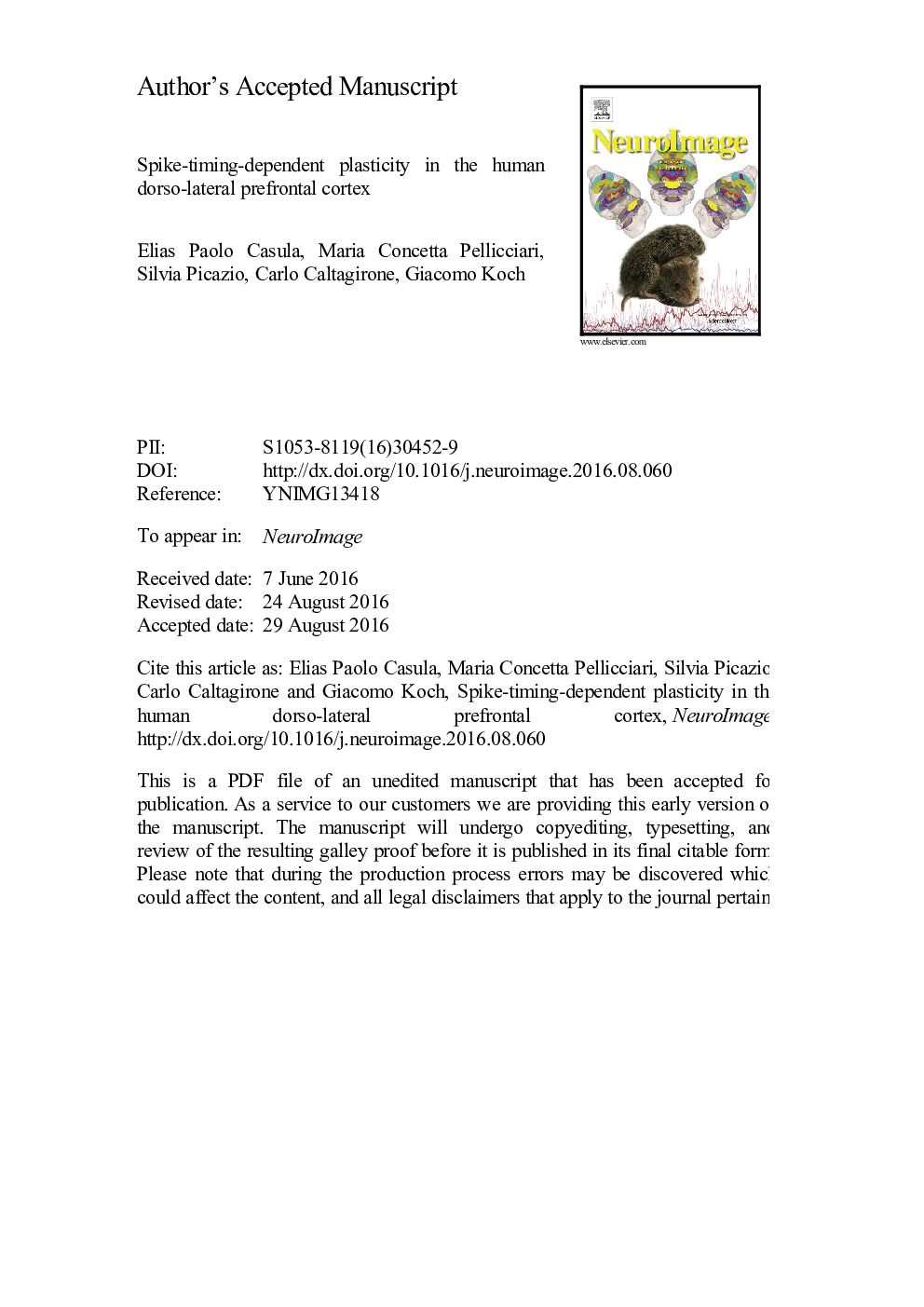| Article ID | Journal | Published Year | Pages | File Type |
|---|---|---|---|---|
| 6023056 | NeuroImage | 2016 | 29 Pages |
Abstract
Changes in the synaptic strength of neural connections are induced by repeated coupling of activity of interconnected neurons with precise timing, a phenomenon known as spike-timing-dependent plasticity (STDP). It is debated if this mechanism exists in large-scale cortical networks in humans. We combined transcranial magnetic stimulation (TMS) with concurrent electroencephalography (EEG) to directly investigate the effects of two paired associative stimulation (PAS) protocols (fronto-parietal and parieto-frontal) of pre and post-synaptic inputs within the human fronto-parietal network. We found evidence that the dorsolateral prefrontal cortex (DLPFC) has the potential to form robust STDP. Long-term potentiation/depression of TMS-evoked cortical activity is prompted after that DLPFC stimulation is followed/preceded by posterior parietal stimulation. Such bidirectional changes are paralleled by sustained increase/decrease of high-frequency oscillatory activity, likely reflecting STDP responsivity. The current findings could be important to drive plasticity of damaged cortical circuits in patients with cognitive or psychiatric disorders.
Keywords
PPCTMSTMS-evoked potentialTEPTOIIPSPSTDPRMTAMTDLPFCICAMEPactive motor thresholdFirst Dorsal Interosseousresting motor thresholdgamma-aminobutyric acidlong-term depressionElectroencephalographyERPIndependent component analysisTranscranial magnetic stimulationPaired associative stimulationlong-term potentiationLTPFDIprimary motor cortexposterior parietal cortexdorso-lateral prefrontal cortexLTDPASEEGmotor-evoked potentialinhibitory post-synaptic potentialPlasticitySpike-timing-dependent plasticityGABA
Related Topics
Life Sciences
Neuroscience
Cognitive Neuroscience
Authors
Elias Paolo Casula, Maria Concetta Pellicciari, Silvia Picazio, Carlo Caltagirone, Giacomo Koch,
